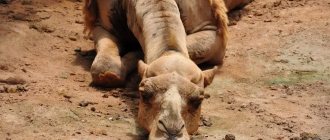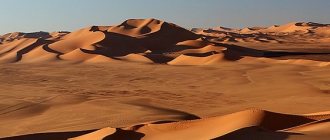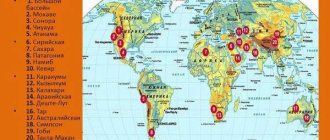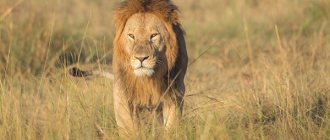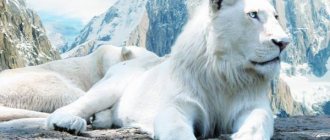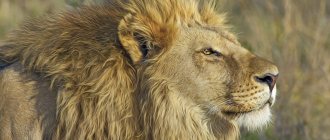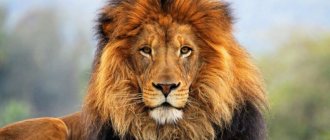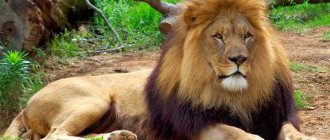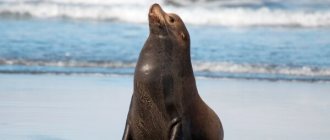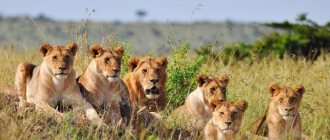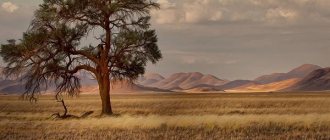Being an antelope is hard. Even very difficult. Little water, a lot of sun, a lot of enemies. But, even filled with warm sympathy for the poor creatures and paying tribute to their grace and beauty, I will tell you, friends, that desert predators, as objects of observation, are much more interesting. We especially wanted to see and take photos of lions with black manes. You could spend your days focused on chasing your dreams. And... never see them. Where are those lousy lions? Why the hell are they hiding?! Africa has its secrets and, alas, Mother Nature is not at our beck and call.
We drove slowly, enjoying the process of searching, but keeping our eyes open. A sighted person is not one who sees the sky right up to the stars above his head, but one who is attentive to the world around him. This is probably why we met more animals than we could have hoped for and witnessed many unplanned events in their lives. Well, we always had a camera at the ready...
Lion and lioness... Love and tenderness...
Lion's everyday life - our holidays
The thrill experienced on that first, unforgettable night in the park led to our increased attention to the black-maned kings of the Kalahari beasts. Yes, perhaps they are really the main feature of the park.
And, I must say, we were lucky - we saw them almost every day. Sometimes these were fleeting meetings, sometimes spectacular performances. But this is not a circus here, and no one is going to specifically entertain tourists, and the animals are unlikely to do any funny tricks.
But if anyone is interested in observing the ordinary life of lions in nature, then be kind enough to adapt to their routine.
In the first rays of dawn on the top of the hill we catch three lionesses in focus at once. They are lying down, yawning - it’s evening for them. There is no point in being on duty next to them; the most interesting thing that can be seen is how they crawl into the shade away from the scorching sun.
It’s quite different to visit the same company when it’s late in the evening. We return to them. The lionesses wake up and, still full of bliss and languor, move into the warm dust right on the road. Picture: three girls lay here side by side in the evening!
The lionesses lie down, stretch, and turn over with their bellies up, like ordinary domestic cats, limp from the heat and comfort.
Finally, one opened her sleepy eyes, her carved nostrils moved, tasting the air, and she raised her head just enough to see us and for us to take a photo. There are no people nearby, just us and the guide’s car with a couple of tourists, whereas in the morning the cars were crowded into a dense heap, people were getting into each other’s frame - everyone wanted photos from the best angles. And the light is soft now, the best shots are taken this way.
The sun has almost set, and with the last light of the day we return to camp, satisfied. What special sunrises and stunning sunsets here! Low clouds are crawling from somewhere in the direction of Roiputs, they add shades of drama to the evening dawn...
Does a black lion exist in nature?
The lion is an intelligent, strong and very dangerous predator, the threat of deserts and savannahs. Many of us associate this beautiful and proud animal with the king of beasts, who inspires fear in everyone, but is not afraid of anyone. We're used to seeing these muscular big cats with red manes and golden fur, but lately more and more photos of dark animals have been appearing. The black lion looks unusual, so many people are wondering: is it a real animal or a skillful work of Photoshop?
You should not think that in their natural habitat there are only lionesses and lions with a reddish color; in savannas you can often find predators with the same mane and skin; there are also cats with beige hair and blue eyes. Nature sometimes rewards animals with the most unimaginable colors and shades. All this is explained by genetic mutations. If there are leucists and albinos, then why can’t there be such a thing as a black lion?
Albinism is opposed to melanism, so it is likely that both white and dark animals can exist. Scientists from different countries unanimously deny the fact that the black lion exists. In their opinion, this is impossible not at the genetic level, but in terms of survival. Mutation experts explain that dark-colored individuals did not survive during evolution, so now there is no hope that a dark lion cub will appear. Even if we assume that it is born in the wild, then most likely the animal will not survive. The black lion suffers from impaired thermoregulation, has reduced immunity, and some difficulties arise when hunting. If an animal is born in captivity, then people will help it survive, but in its natural habitat it has practically no chance. Despite the fact that scientists have answered the question in detail, presenting their own point of view, many people still ask the question: “Are black lions real?” and “Where can I see them?”
Cryptozoologists disagree with the researchers; they believe that dark individuals can still be found in the wild. In support of their point of view, there were reports from the African continent, namely from the area of \u200b\u200bOkovango, and from Persia that black lions were seen there. Both territories have one similarity - they are covered with low-growing trees and shrubs. This landscape allows predators with dark fur to hide from the scorching sun and hide when hunting.
A whole pride of dark lions was found in Okovango, but they cannot be called black. They differ from ordinary big cats in their dark brown color. Scientists do not recognize that this is a consequence of melanism, but agree on the idea of inbreeding. This color stuck because predators live in the forest.
The black lion is a cryptozoologist's dream today. They believe that there are dark individuals in the African bush or savannah, but no one can find them yet. If a melanistic lion were found, it would be easier for researchers to study the evolution of the species. Scientists can only hope that the black miracle will one day be born in the zoo.
Life of lions in a pride
There are about 40 lion families - prides - in the park. Its usual composition is a dominant male, several lionesses with cubs, and sometimes two or three additional young males. The last day of our stay at the Polentswa camp was extremely successful - it gave us a meeting with a total of 19 lions from three prides!
At dawn, in full combat readiness, we moved to the lion's places for new discoveries.
A special feature of the Kalagadi safari is the necessary ability to read the tracks of wild animals at watering holes and on the roads of the park. This is how experienced trekkers find out who, when and where passed here and lead tourists along with them. We are traveling without a guide, but it was raining at night, and huge lion tracks were clearly visible. What are these little paws? Looks like these are lion cubs! Judging by the size.
And we are lucky! The pride lies by the road: a lion lazily catches grass fluff-brooms in his mouth, and lionesses rest nearby, charred under the sun. But there are no lion cubs. It's a shame! The well-fed family calmly falls asleep, and we mark the point on Maps and move on. They won’t go anywhere, and we’ll come back and check in the evening.
Bingo!!! We are lucky again - more lions! Two not very black-maned animals are sleeping under a tree. The mane is a sign of masculinity; only males flaunt it. Of course, the very name of the lions in Kgalagadi simply obliges the formidable predator to have not only sharp teeth and a fierce look, but also to have slate-black fur around the neck, shoulders and chest.
But this is not always the case. While all lions have skin the color of pale gold, the color of the shaggy manes that adorn them varies greatly: from light yellow to the deep black by which they are actually known. The darker and more luxuriant the flowing mane, the more mature, stronger and more experienced its owner is. And the more status he looks in the eyes of rivals and females.
Animals living in a land of great thirst are able to cover vast distances in search of food and water. As a rule, such animals have to be content with less food. Indeed, Kalahari lions (and they represent a separate subspecies of African lions!) look thinner than their cousins from Etosha, they have longer and more slender legs.
However, if the average weight of African male lions is about 130 kg, then His Black-Maned Majesty can pull an impressive 190 kg.
Black lion in nature - theory and practice
The phenomenon of albinism, expressed in an uncharacteristic white coloration, is known to be contrasted with melanism, which is most often observed in the population of leopards and jaguars. This phenomenon makes it possible for individuals with an unusual black coat color to be born.
Wild melanistic animals are rightfully considered to be a kind of aristocrats in the world of natural conditions. Such an animal acquires black coloring due to the presence of an excessive amount of melanin in the skin. Increased amounts of dark pigment can occur in a variety of animal species, including mammals, arthropods, and reptiles. From this point of view, a black lion may well be born, both in natural conditions and in captivity.
As a rule, melanism is caused by adaptation processes, so the individual acquires an uncharacteristic black color in order to survive and be able to reproduce in the presence of unfavorable external factors.
This is interesting! Due to the manifestation of melanism, some species of animals can become almost invisible to predators, while for other species this feature provides some advantages and helps them hunt more successfully at night.
Among other things, it must be taken into account that melanin plays an important role in the health of the animal, which is due to the ability of pigments to absorb a significant amount of ultraviolet radiation and prevent radiation damage. Scientists have also found that such animals have maximum endurance and are perfectly adapted to life in unfavorable conditions, so a black lion in nature could well survive.
A little horror movie about lions
Tourists in the park are sociable, but no one here talks about the dollar exchange rate, protest marches or fashion. Almost all conversations concern animal observations. A car stops on the road. “Have you seen the lions? - asks the girl from the car, while her face shines with delight. “They were lying behind that bush, and we were photographing them!” We were so close to them!”
But this is in vain. Do not forget that this is still a dangerous predator, and that there is a first time for everything.
In November 2011, three lions wandered outside the park. This is not surprising - most of the park is not fenced. The trio had fun with the cow of one of the Botswana farmers, but he didn’t like the joke at all.
Yes, and this sometimes happens to one of the lions. Then the rangers go in search of the fugitive, shoot him with a tranquilizer and bring him back, sleepy. The offender is given time to sit for a while in an area behind an electric grid, probably so that he realizes his offense, and then he is released into the general area.
This time, the rangers went to search in an open truck. One was driving the car, the second stood in the back and peered at the surrounding area. However, the lion found them first. Until now, there has not been a single case of the king of beasts attacking people directly in transport. But then suddenly the predator jumped into the back and grabbed the man’s leg with its teeth.
The ranger fought back desperately, a colleague came to his aid, and although they did not have firearms with them, they managed to fight back. With his boot stuck in his teeth, the lion retreated. After such a serious crime, the beast had to be tracked down and, without mercy, destroyed. The other two were returned safely.
Subspecies of predatory animal
In the earliest classifications, twelve main subspecies of lion were traditionally distinguished, and the Barbary lion was considered to be the largest. The main distinguishing features of the subspecies were represented by the size and appearance of the mane. The slight difference in this characteristic, as well as the possibility of individual intraspecific variability, allowed scientists to abolish the preliminary classification.
As a result, it was decided to leave only eight main subspecies of lion:
- the Asian subspecies, better known as the Persian or Indian lion, characterized by a rather squat body and a not too thick mane;
- a Barbary or Barbarian lion completely exterminated by humans, having a massive body and a dark-colored, thick mane;
- Senegalese or West African lion, the characteristic feature of which is a fairly light coat, a medium-sized body and a small or completely absent mane;
- the Northern Congolese lion is a rather rare species of predator belonging to the cat family and has a great external resemblance to other African relatives;
- the Masai or East African lion, distinguished by elongated limbs and a peculiar mane, as if “combed” back;
- the southwest African or Katangese lion, which has a light coloration over the entire surface of the body, very characteristic of the subspecies;
- a subspecies that became extinct at the end of the nineteenth century is the Cape lion.
But white individuals and the black lion . Of course, white lions are not a subspecies, but belong to the category of wild animals with a genetic disease - leucism, which causes a characteristic light coat color. Such individuals with very original coloring are kept in the Kruger National Park, as well as in the Timbavati Reserve, located in the eastern part of South Africa. White and golden lions are called albino and leucist. The existence of black lions still causes much controversy and is highly questioned by scientists.
Lovely details from the life of a pride of lions
During the day I had ridden so much that I just wanted to stretch out on the bed and give up on the sunset photo hunt. But I didn’t regret it: a lion dad and his two children were waiting for us at the rendezvous point. Lion cubs - where were they this morning, under what bush were they sitting? But now they were playing: the kids tumbled, tormented the parent, pulled his ears... The lion endured - children are children...
But every family has its own measured daily routine: the games are over, the lion cubs drink water, then the lionesses come.
They also drank some water and went hunting. They hunt in groups, their taste is not discriminating and they have no disgust at all, so anything that moves can become prey - from a mouse to a solitary giraffe.
But the kings of beasts still give preference to antelopes... Soon their roar was heard - dinner was served, and the lion with the younger members of the family headed towards them.
Time flew by. One moment the charming lion cubs were in the golden sunset rays, and a second later they were already in the red ones, and a moment later Katya’s camera stopped focusing in the twilight. Until the last moment we followed the silhouettes of lions, and then, following them, we also went to dinner.
What a surprise - giraffes
In the vicinity of Mata Mata lay a dead giraffe. The main suspect was sitting nearby. There is an expression of complete confusion on the lion’s face: “Damn it, I didn’t want to! And he didn’t run away... Well, I just couldn’t restrain myself..."
Blackmane was insincere. Sometimes lions attack lone giraffes, but more often, if they do such a thing, they go in a crowd. But even then, catching this large animal is fraught with serious difficulties and dangers. Interesting information about giraffes - the tallest animals in the world - is written here.
Giraffes disappeared from Kgalagadi in the 1930s due to overhunting, not by wild animals, but by humans. The last giraffe was killed at the Kameelsleep watering hole, whose Afrikaans name reflects this sad event. Yes, Africa is cruel. But wild animals never kill for fun.
In July 1990, eight elegant, long-necked beauties were relocated from the Etosha Game Reserve to Kgalagadi. The new residents settled in the vicinity of the Craig Lockhart water source, which is approximately 17 km from the Mata Mata gate. Now in the park their number has exceeded six dozen, but, basically, they still prefer to pluck the thorny acacias in this area.
Apart from the Big Five, photogenic giraffes are the animals that make Africa Africa. Strange and unreal, they make one doubt the theory of evolution and assume their origin from space. From school zoology lessons, it is known that the color of animals should blend with the terrain in order to help them survive. This works with lions, hartebeests, and springboks, but the mind refuses to believe that a giraffe in a network of noticeable spots merges with something.
It would seem that we didn’t see enough of them last year in Etosha? But still, they make a very strong impression. There is nothing to say about Katya - these are her first giraffes, she was looking forward to them and is now looking at them with shining eyes.
You might think that there is no need for binoculars to observe such a noticeable and large animal. No, you still need binoculars to see their bluish tongues, the hairs on the tops of small horns on their foreheads, the buffalo weaver birds that select parasites from the skin of silent giants. And we look at the giraffes, and the world freezes with us...
African lion: description
It is difficult to find a person on our Planet who does not know what the king of beasts looks like. This animal is easily recognized by its characteristic lion's mane, so even children can easily recognize this animal in the image. Despite the fact that the lion is considered a powerful animal, its body length is a little more than 2 meters. If a lion is compared with the Ussuri tiger, whose length reaches almost 4 meters, then the lion is not such a powerful predator. The weight of adult males is almost 200 kilograms .
Important point! Lions kept in captivity or in protected areas always weigh more than their wild counterparts. This is due to the fact that they move much less, and there is always enough food for them. In addition, they are looked after in zoos, so their manes are more voluminous compared to those animals that live in their natural environment.
Lions have everything powerful – both their body and their head. The basic color of the skin varies depending on the subspecies of the animal, while their color can be cream, yellow-sand or ocher. Asiatic lions have a white and gray base color.
Old lions have coarse hair that covers the entire head, shoulders and goes down to the lower abdomen. Adult lions have a thick mane that is almost black or has a brown tint. For example, one of the subspecies of African lions, the Masai lion, does not have such a voluminous mane, but it does not even reach the shoulders and there is also no mane on the forehead.
Lions, regardless of subspecies, have relatively small ears, with rounded ends, and a yellow spot can be seen in the center. Until individuals reach sexual maturity, spots can be seen on the skin of young lions, which disappear as they grow older. At the tip of the tail there is a kind of tassel, which is typical for all lions. Their vertebral section ends precisely in this place.
AFRICAN LION the largest predator in Africa / Interesting facts about animals
Habitat
The modern habitat of these predatory animals differs significantly from the territories where lions lived a long time ago. Subspecies of African and Asiatic lions lived in the southern part of the European continent, in India, and also spread throughout the Middle East. Ancient lions were found throughout almost the entire African continent, although they could not be found in the Sahara. The American lion is called so because its natural habitats were North American territories. Asiatic lions, as a result of their extermination by humans, gradually began to die out and, as a result, were listed in the Red Book. African lions, in small groups, are found only in the African tropics.
Therefore, we can safely say that African lions and their subspecies are distributed on only 2 continents - Asia and Africa. Asiatic lions live in Indian Gujarat, where a dry climate with bushy vegetation prevails, which is typical of the savanna. If you believe the latest data, then today there are just over five thousand individuals representing the Asian subspecies left.
There are many more African lions. They live mainly in countries where the climatic conditions are most suitable for them. In Burkina Faso there are up to a thousand individuals, or even more, and about 8 hundred individuals live in the Congo.
Compared to the 70s of the last century, the total number of lions has decreased significantly and, according to unofficial data, there are only about 30 thousand of them left. Typically, African lions are found in the savannas of the African continent. Despite this, they are very difficult to protect from the large number of poachers eager for easy money.
What does it eat?
For its life, this predator chose the open spaces of the savannah, with a sufficient amount of moisture, as well as their main diet - artiodactyl animals. Leos are also called the “kings of the savannah,” because they feel very comfortable here, realizing that they have no equal in the savannah. Males feel this way, resting most of their lives among thickets of various bushes. Females, on the contrary, are considered real workers, since they have to get food, both for themselves and their offspring, and for males.
Their behavior is also “royal”, since they wait for the female to catch the prey and bring it to her family, after which the males are the first to start eating. After eating, they leave, leaving "leftovers" for the female and her cubs. This does not mean that males never hunt. They can also go hunting if they are very hungry or do not have a female. Despite such an unequal position in the family, males can always defend their families if foreign males encroach on them.
The basis of the lions' diet is represented by various artiodactyl animals, but hunger, as they say, pushes animals to violate their diet and often rhinoceroses or hippopotamuses become their prey if the lions manage to overtake a weak animal in the water. In addition, their diet may include rodents, non-venomous snakes, as well as other available game. Every day a lion eats up to 7 kg of meat, otherwise he will not be able to survive in such harsh conditions. Often lions form groups and go hunting. This increases the chances of a successful hunt, so sometimes the result can provide food for an entire group of lions. As a rule, among healthy and strong lions there are sick individuals who are unable to obtain food for themselves under natural conditions. Then they look for easier ways and can even attack a person.
LION IN ACTION! Lions against crocodile, hyenas, buffalos...
Reproduction and offspring
As a rule, lions lead a pack lifestyle, so they can mate at any time of the year. You can see, quite often, how an adult lioness rests surrounded by her offspring, which belong to different age categories. Females, compared to males, get along with other females without any problems. Males often defend their rights to own females. Sometimes such a confrontation leads to the death of one of the males. Unfortunately, nature is unforgiving and the fittest always survive.
After mating, the female carries her future offspring for 100 days or a little longer. After this, from 3 to 5 cubs are born. After birth, lion cubs live in places inaccessible to humans. The babies that are born are about 30 cm long, and their coat is abundantly “strewn” with spots of a beautiful shade. This color (spotted) persists until the onset of puberty, which occurs only in the 6th year of life.
Living in wild conditions, lions live on average about 15 years or a little longer. If the animal is kept in captivity, provided with all the conditions, then lions can live for 30 years.
The winged splendor of the park
It all started with social weavers and their extraordinary nests. Then there were the dust bathing families of fluffy ostriches with their gangly babies in tow, the respectable great bustards. Maybe someone will say that Kalagadi is not as rich in birds as, for example, in the Okavango or in Chobe Park, but even here a fair number of very remarkable representatives of the avifauna fly. Kgalagadi has one of the largest populations of birds of prey in Africa.
It’s not time to sleep—dawn has already painted the sky in gentle tones. It's time for us to leave the comfort of Polentswa for a photo hunt. We wrap ourselves up warm and drive past cars with tourists sleeping in tents on the roof, past sleepy tents on the ground. No, a couple of people are still having breakfast...
During the night the lions finished the oryx. What was left was now shared by vultures. African vultures are voracious but shy. As soon as we approached, they immediately flew off to the side. We are waiting... Finally, we calmed down. They return to their feast, pinch off, hastily swallow, turn their heads so that if something happens they immediately run away...
Springboks, adults and calves, graze near the swamp. Before we had time to really look at the antelopes, an eagle, such a huge one, landed on a nearby tree. The martial eagle soars in the air for hours in search of its next victim or sits quietly in ambush among the branches of a tree. He looks with unkind yellow eyes. With them he sees potential prey at a distance of up to five kilometers! Yes, it is difficult for a person to compete with his visual acuity.
A proud posture, a powerful curved beak, strong paws... The eagle's wingspan is impressive - more than two meters, and it is able to lift prey weighing up to four kilograms, although if it pushes itself, it will carry away all six. Sometimes he even allows himself to hunt the heaviest of flying birds - great bustards.
After half an hour and one eagle flying away, we continued catching interesting winged photographic objects. Looks like it's going to be a hot day! A bird came into the frame - I had never seen anything like it before - a red beak, black and brown itself. Either an eagle, or something close. We need to look at Katya’s book; we couldn’t resist and bought her a large bird identification book at the Johannesburg airport.
We had a lot of falcons on this trip. Why do people like them confuse the soul with their love of flying into the sky? Now all the interest is to scare them away and take a picture of them in flight, but so far it hasn’t worked out. It is very difficult to get a decent shot of a bird in flight. The wings are open, the feathers are bristling.
And in general, taking a good photo of birds, for many reasons, is very difficult. It’s one thing when you still don’t see what you need. But it’s not as annoying as if she flies up from under her nose, shouts a sharp “how-how-how” and flies away without allowing you to take a single shot...
The irresistible beauty - the light-colored song hawk - has a habit of perching in a prominent place and sitting there for a long time. It often feeds on the ground, hunting insects, lizards and mice.
It happens that a funny mouse deftly climbs tall and flexible grass stems almost to the very top of the plant. Even if the blade of grass is thin and bends under the weight of its body, the animal does not fall from it, deftly holds on with its hind legs and helps itself to restore its balance with its tail. Mice often nest in the branches of bushes or scurry through sparse vegetation along roadsides. It takes a hawk one or two minutes to fly down, pick and swallow a small rodent, and look out for the next one.
But recently there were heavy rains, which, apparently, flooded the rodents' burrows, and the little ones with black beady eyes suddenly disappeared. But I don't like mice enough to be too upset. But the blue-winged bird is upset: it carefully examines the grass, but does not find its favorite delicacy.
An eagle owl was hiding in a tree not far from the camp. He looked at us, mere mortals, blinking his pink eyelids and tracking our every movement from above - in every sense. It is believed that eagle owls and owls are the most abundant birds here.
Well, don’t you want to go to Africa yet?
Black Lion - Exposure
The confidence of cryptozoologists in the existence of black lions, to date, is not confirmed by any documentary facts. In their opinion, black lions, the population of which is only 2 on earth , may well inhabit Persia and Okovango. However, taking into account the fact that dark-colored animals, less adapted to hunting in the shroud, will not be able to obtain sufficient food for themselves, the likelihood of their spread is zero.
Also very peculiar is the confirmation of the existence of such lions by the presence of images of a black predator on coats of arms or in the names of English pubs. Following this logic, lions with blue, green or red coloration should also exist in natural conditions. As for the pictures of the black lion, which in a short period of time collected countless views on the Internet and caused indescribable delight among lovers of everything unusual, they are just another and very successful photoshop.
Tags: wild animals, lion, black lion
Greetings from four-legged friends from sunny Kgalagadi
Herds of ungulates and an abundance of rodents support the existence of not only big cats, but also wild dogs, long-eared foxes, hyenas, and black-backed jackals.
We saw the latter every day, these guys trot everywhere. They are inquisitive, courageous and agile. At the reservoirs where flocks of simple-minded hazel grouses gather to drink, a treacherous jackal awaits them, in full readiness. Right in the air he manages to grab four or five birds. And this is instead of saying good morning.
I don’t know how many months the Danish professional photographer Annette Laursen sat in ambush, but the photographs she took of such a hunt can deprive anyone of peace. The jackal hunting birds actually flies in the photo! But here we lacked the element of luck.
But it’s interesting, by the way, how jackals sort things out: first they circle around each other on stiff legs, then noise, dust - all hell breaks loose. It seems that both will be seriously wounded... But in a moment - you have not yet had time to prepare - and everything is already over. The former rivals are alive and well, and the birds are once again the focus of their attention.
A wary hyena emerges from the river bed. From the looks of it, she's about to hunt. There is a suitable object somewhere nearby! A spotted predator rushes across the road, its legs kicking up clouds of dust.
The nameless and wild version of the domestic cat slumbers precariously in the fork of a camel acacia tree. The poor gray guy with a striped tail doesn’t even know how sweet it is for kittens when a loving hand scratches behind their ears and how they can rule the hearts of their owners. As soon as he sees people, he disappears very quickly... If he is very, very lucky, he will remain lying there, looking warily.
Slender yellow mongooses delight with their amber eyes. Here they are different from those we saw in Namibia - smaller, red and with a white tip on the tail... The cute ground squirrels don’t mind being next to them. They have bushy tails and a stripe on each side.
The cuties snort, chew something with pleasure, scratch their bellies with their clawed paws and carefully watch us. Sometimes they have playful fights, but then the only thing you can see is the flickering of their tails, which have turned into brushes.
Our biggest problem was the inability to get out of the car and get close to the subject to take a decent photo.
My favorites are the human-like meerkats. Standing in a column on the hind legs, the front legs folded on the stomach... From the main primer, the curling path leads us to our first meerkat in Kgalagadi. Here he is - standing. Handsome!
And the family is funny: squeaking, playing, combing the area near the minks in search of their rightful snack - beetles and lizards. You can watch them and listen to their extensive vocal repertoire endlessly. In the evening at the Polentsva camp they showed the photos to the guide, but he didn’t know that meerkats had settled so close to them! It's nice - we're so big-eyed!
But who we never saw... No matter how much we kept our fingers crossed, our paths with the honey badger never crossed. But this cunning beast rarely shows itself to photographers. We didn't see a cheetah. However, this can be regarded as a reason to come back here and try again...
Leopard on a branch
We didn’t yet know his name when we saw a leopard with prey on a tree branch literally a couple of meters from us...
About leopards... Of all the animals in the transfrontier park, they are the most desirable for photography and observation. Some do not get to see them for a number of visits over several years. There's nothing to be done - firstly, excellent camouflage, and secondly, there are few of them.
According to official estimates, there are approximately 150 leopards living in the entire park, and they are very cautious animals. They are also the most dangerous. A lion, before attacking a person, will warn him about this once or twice with a guttural roar, while a leopard will simply silently attack.
In nature, everything interacts: birds scream when danger is near, vultures circle over the site of a recent hunt. Sometimes, in order to find someone, you need to watch something completely different: the black-backed jackal often follows lions, large groups of sandgrouse at watering holes attract birds of prey, the restlessness of springboks and oryxes indicates the presence of one of the big cats nearby in ambush. The most difficult animal to track is the leopard.
We are lucky, we watch how the spotted miracle of nature digs into the neck of its prey, tearing off a piece of meat with its pointed claws. The leopard performs all manipulations with incredible grace, gently adjusting the antelope’s head with its paw. How good he is! Velvet skin, flower pattern, which distinguishes the leopard from other spotted cats... And its tail curls into a spiral!
The entire next hour was spent in delight and clicking the camera. We would have spent even more time if another lucky person had not approached our company.
He may be lucky, but he's also a real jerk. Because the main rule of an observer in the park: when you drive up, turn off the engine, sit like a mouse so as not to scare him away! This one did the opposite, as a result, the leopard stopped eating, gracefully jumped from the tree, stretched and - an amazing ability to disappear! — the pattern on the skin made him invisible in the dense bush.
We looked at the guide with hope: will there be a leopard here tomorrow? After all, we could remember the coordinates of his lunch point... The guide shook his head: this makes no sense. Leopards are not lions, they do not hang out in one place, their next meal is possible in any secluded corner within the perimeter of their personal territory.
But we still checked the next day. As the guide predicted, the search for the leopard was unsuccessful. The trail of the beast had long since disappeared, and with it the carcass of the antelope disappeared.
Is there a black lion?
Among the most common mammals, the appearance of black coloration is most often observed in the cat family. Leopards, pumas and jaguars, whose bodies are covered with black fur, are well known in nature and studied by many scientists.
Such animals are usually called “black panthers”. Approximately half of the entire leopard population living in Malaysia has this unusual black coloration. A significant number of black-colored individuals inhabit the Malay Peninsula and the island of Java, as well as the Aberdare Range in central Kenya.
The black lion, a photo of which is often found on the Internet, could live in low-light conditions, where the dark animal would be least noticeable. Research from almost fifteen years ago, published in New Scientist, confirms the fact that melanism may be necessary for the animal body to increase resistance to pathogenic microorganisms.
It is assumed that pigment features provide felines with immunity to most viral infections. Perhaps if the black lion were captured on video , it would be much easier to establish the truth about its distribution.
Who are you, Masego?
In 2011, as fate would have it, Matthew Schurch, a doctor of astrophysics from the University of Cape Town, ended up in Kgalagadi Park. Here he felt incredibly lucky: he saw a leopard and took several photographs of the spotted animal. Returning home, he tried to find out which particular specimen he came across. This turned out to be extremely difficult. Scattered descriptions on the SANParks forum and countless photographs of these animals on the Internet were of little help.
Of course, all leopards in Kgalagadi are special. They live in harsh conditions, forced to endure temperatures ranging from extremely low - well below zero, to extremely high temperatures during long months of merciless heat. Add to this the constant search for food and water, as well as the continuous struggle for survival. Therefore, they are probably somehow different from leopards from other places in Africa. But how can an ordinary tourist distinguish local spotted natives from each other?
Don't forget, friends, Matthew was a scientist! He knew how to do complex things, understood galaxies, knew how to distinguish this or that star from a million others like it. And after thinking about it, he created a reference guide for identifying the park's leopards.
It provides information on each animal - when and where it was spotted, what identifying features it has. All of them are on leopard skin. The spotted pattern on it is unique.
By the way, friends, don’t hesitate to send Matthew your photos, such a connection with the author is welcome! After all, photos of leopards add to the database of magnificent cats, and there is always the possibility that you have seen a new leopard that has not yet been reported. And then you can give the newcomer a name.
How to use the manual in practice? We focus on our photography. To begin with, pay attention to the spots on the sides of the body or on the head. Then we compare them with the corresponding spots on the reference photographs. We find similar ones, then check other parts of the animal’s body for a match. It's also painstaking work. But this is how we learned that our handsome leopard is very young and has the name Masego.
Exactly - there is such a name in the Tswana language. But... Masego is used as a girl's name! Things to do... Let's turn again to the wonderful reference book. But it says that the gender characteristics of this leopard are still unknown. Masego, who are you?
We had another encounter with the elusive leopard. Already with someone else. Almost at the very exit from the park, a little before reaching the Mata Mata gate, we pulled off onto a side road. There we met a cavalcade of cars accompanying a leopard going about its business. We looked with all our eyes, and he walked independently a meter from the cars and beat his tail in annoyance. The Kalahari Desert predator walked several hundred meters along the road, then turned off and disappeared into the thickets.
Maneuvering, among the beast's car retinue we met our last year's friends - Mauren and Jim Gibson. And we photographed the leopard together. Our friends accompanied us to the exit from Kgalagadi, where we said goodbye to them. Thousands of kilometers of roads across Namibia lay ahead of us...
